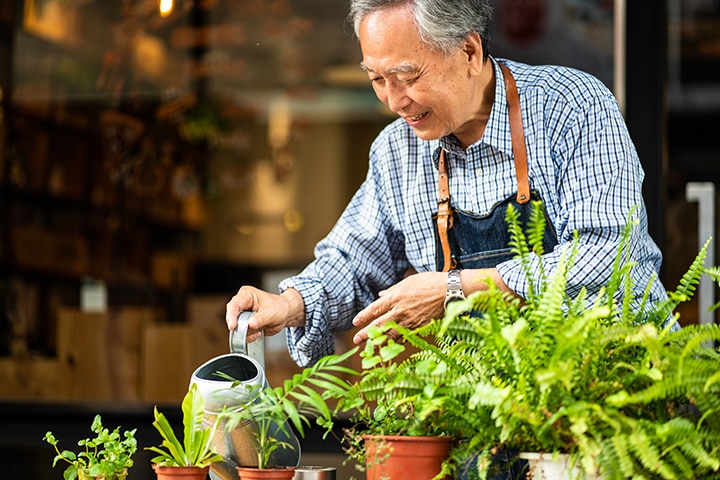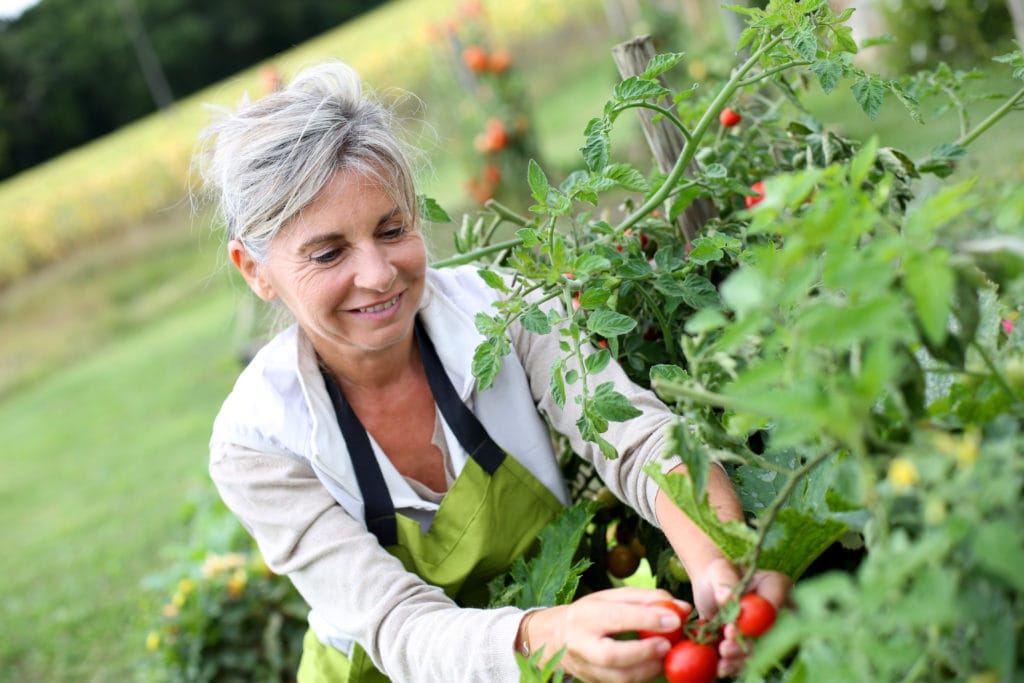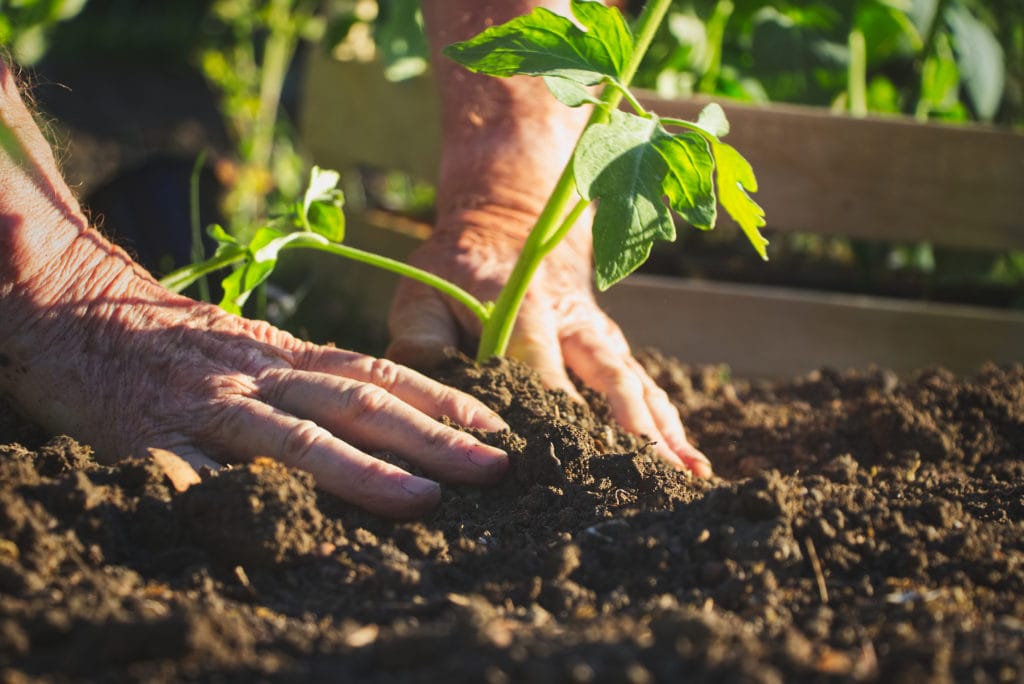
Gardening Safely with Osteoporosis

Gardening Safely with Osteoporosis

Now that spring is officially here, many of us are excitedly waiting until we can get outside and into our balcony or backyard gardens.
The pandemic has made outdoor interests like gardening even more popular. Love of gardening and the pleasures of poring over garden books, seed catalogues and doing online searches on annuals, perennials, mulch and more have kept us occupied during this Canadian winter. However, those with osteoporosis may worry that pain and fractures, or the fear of pain and fractures, will mean giving up their gardens.
Gardening is an excellent physical activity that can be enjoyed by people with osteoporosis if they follow some safety considerations. As with any new form of exercise, if gardening is a new activity, or if you have been newly diagnosed with osteoporosis or are at high risk of fracture, it is a good idea to discuss this with your healthcare provider. If you feel any new pain while gardening, stop immediately and consult with your doctor. For the most part, however, osteoporosis should not prevent you from enjoying some form of gardening.
A major benefit of gardening is a healthy total body workout that includes weight-bearing and resistance activities. As you hoe, plant, water, weed and harvest, your body engages in effective weight-bearing and resistance activities that contribute to good bone health – as long as you start slowly and move safely.
If you have a spine fracture or are at risk of developing a spine fracture, you need to consult with your healthcare provider about how much you should reach, bend or lift. Generally speaking, individuals with spine fractures need to avoid heavy lifting, and those who are at high risk of fracture need to approach gardening with the same precautions as those needed to carry out their indoor activities safely.
If you can’t do as much for your garden this year as you could last year, don’t give up. Stay positive and take control. You may need to rethink your garden design or the type of plants, flowers or shrubbery you have. When planning changes decide which tasks are difficult or painful. No single garden plan or way of gardening is right for everyone. You may decide to remove or change aspects of your garden to make it safer and easier to maintain.
Planning and Preparing Your Garden:

- Create narrow borders or beds that can be reached easily without back strain, or consider container gardening near your house. You can do this for flowers, vegetables, small trees and shrubs.
- Raise beds so that bending forward is unnecessary. You may need to hire someone to do this for you, but it will only need to be done once. Using retractable hanging baskets is another option.
- Replace areas of the lawn with paving stones, longer meadow grasses or ground covers that spread. This creates fewer weeds and requires less mowing.
- Ask for help with the bigger jobs like structural changes to your garden. This might seem expensive or daunting at first but it will be worth it in the long term. Get several quotes and ask around. You can rent gardening equipment to do it yourself, but it may be safer, easier, and more enjoyable to do the planning yourself, and pay someone else to do the heavy work.
- Choose low maintenance herbaceous borders and plants that do not need staking or pruning.
- Avoid fast growing hedges that will need constant pruning. Choose slower growing, more compact shrubs.
- Take care when moving containers as they may be heavy even when empty. Consider containers on casters or on low trolleys that can be easily pushed around.
- Some tools have long handles with interchangeable ends. This will reduce both the bending and the number of tools that need to be carried around the garden. Check the tools available in your local garden centre, nursery, specialty suppliers or on the Internet.
- Electric lawn mowers, which can be turned on by pushing a button, are preferable to gas lawn mowers, which are turned on by pulling hard on a cord. If you have osteoporosis, this pulling action may increase the risk of spine fractures.
- Plan a seating area somewhere in the garden to rest and enjoy your efforts, preferably near scented flowers or under your favourite shade tree.
- Try not to create an obstacle course. Make sure there is clear access to all parts of the garden.
- Make sure paths are wide enough, especially if you use a walking aid.
- Wooden rails can help if levels change in the garden. Gradual slopes or ramps may be better than uneven steps.
Getting Dirty:

- Do warm-up exercises before you start, and continue with appropriate exercises to improve fitness and lessen pain. Regular exercise is the key to maintaining strength, balance and co-ordination and to reducing the risk of injury.
- Wear proper footwear. Shoes should have a rubber sole and should not slip off your feet. Strong toe-capped shoes may prevent injury if you drop something.
- Don’t wear your reading glasses while gardening, but do wear a hat, sunglasses and sunscreen.
- Avoid gardening in the middle of the day if it’s hot. Go out early in the morning or in the later afternoon and evening.
- Take frequent hydration and shade breaks.
- Take care with your posture. Try to keep your back straight at all times.
- If you use a walker, attaching a basket will leave your hands free.
- A low padded kneeling stool, especially with side handles to help you push up, may be useful and can also serve as seating if you get tired.
- When using a shovel, rake or hoe, try to stand straight with feet apart, one slightly ahead of the other so that your body weight shifts from one foot to the other in a rocking motion. Avoid twisting the spine.
- Lay out all tools where they will not be a tripping hazard, yet will be readily accessible without excessive reaching.
- Use a child’s wagon or trolley to transport rocks, plants, tools, bags of soil, buckets of water etc. around your garden.
- Use a knee pad if working on hands and knees.
- Lift safely by planning your lift. Lift objects from a squat position, push up with the leg muscles, and carry objects close to the body, keeping your back straight. Use the correct equipment, e.g., wheelbarrows or dollies.
- Avoid pulling or lifting heavy items such as bags of soil or compost out of the car. Get someone to do this for you or have it delivered to the spot where you need it.
- Reduce unnecessary lifting. For example, instead of carrying water, use a hose with an appropriate nozzle to direct water without bending.
- If you must transport water, put a bucket into a child’s wagon, pull it over to the tap to fill and then pull it to the spot in the garden where you want it. You may also use a long-handled, lightweight watering can that will not become too heavy when full.
- If you can afford it, invest in an irrigation system. Alternatively, you can place watering hoses inside your beds. These are hoses with holes in them that automatically water your garden when you connect them to your main hose.
- Reduce unnecessary tasks. Leave light leaf litter or lawn clippings on the garden. Use grass clippings or bark as mulch to cut back on weeding. Read up on deep bed/no dig methods for growing vegetables.
Apart from being an enjoyable activity, gardening has many benefits. If done safely, it is a good form of exercise that helps to not only build stronger bones and muscles, but also confidence, which is especially important after a diagnosis of osteoporosis, a fall or a fracture. Gardening can also be an incentive to increase mobility. It can provide a distraction as part of pain management, or, more generally, can help create a sense of well-being and optimism for the future.
Gardening can also provide some wonderful socializing opportunities when the neighbours stop and chat. This year, spring into gardening safely and remember that summer is just around the corner. Green shoots will soon be poking their way through the earth. Above all, take time to smell the flowers and enjoy your garden!





